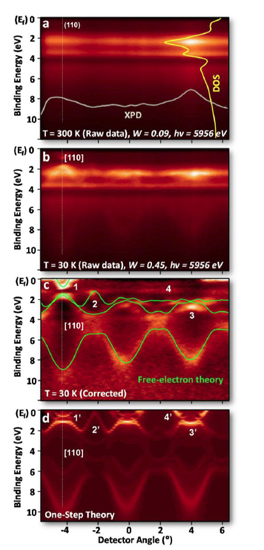Success in Measuring the Accurate Electronic Band Structure of Solids
A Development toward New Functional Materials!
2011.08.19
(2011.08.25 Update)
National Institute for Materials Science
A group centered by Dr. Shigenori Ueda, a Researcher at the NIMS Beamline Station at SPring-8, Research Network and Facility Services Division, National Institute for Materials Science, succeeded for the first time in the world in measuring the band dispersion of solids by angle-resolved photoelectron spectroscopy in the hard X-ray region.
Abstract
This research has been carried out as joint research with the University of California, Davis, the Lawrence Berkeley National Laboratory, the University of Erlangen-Nuremberg, the University of Mainz, the Jülich Research Centre, and the Ludwig Maximilian University of Munich.
As a result of this achievement, it is now possible to measure the accurate electronic band dispersion in the interiors of various functional materials. This is expected to provide important guiding principles for the creation of new functional materials.
The results of this research has been published previously in the electronic version of Nature Materials, which is a sister journal of Nature, at 2:00 a.m. on August 15 (Monday) Japan time (at 18:00, August 14, London local time).

